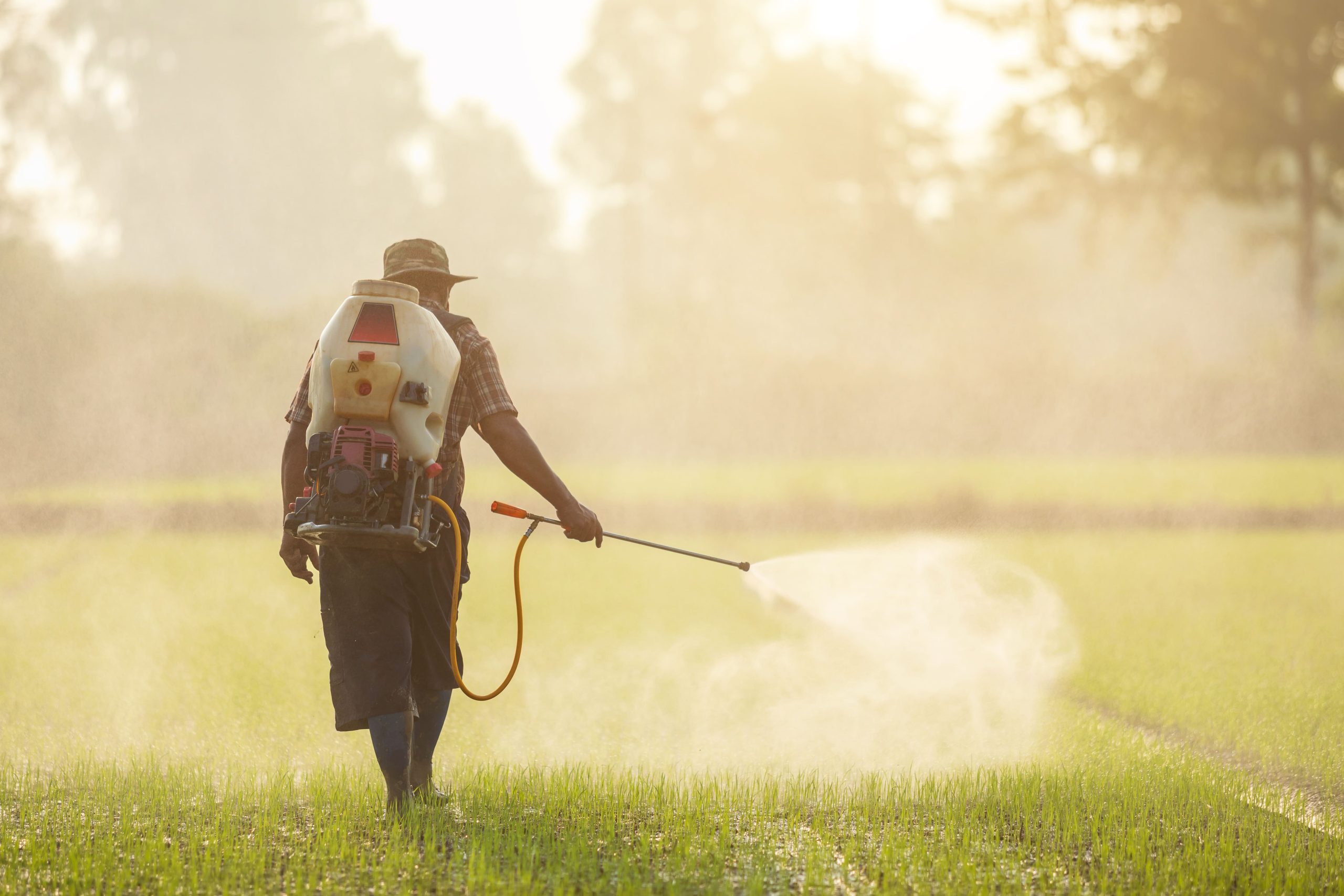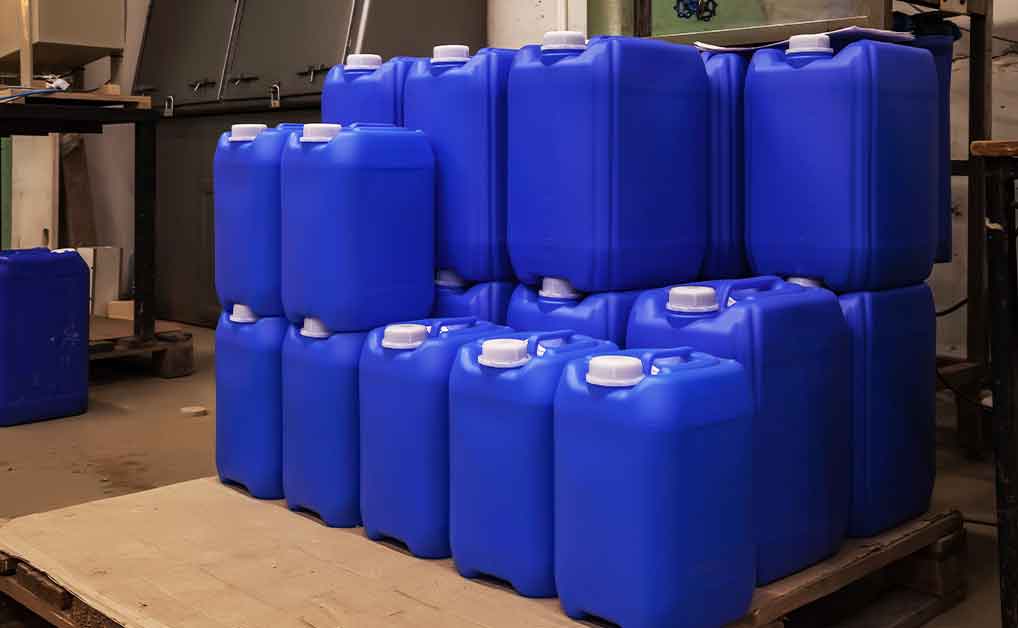Safe handling of agrochemicals on the farm

A wide range of chemicals and fuels, used by farmers in their daily work, are dangerous to people, animals and to the environment and must be handled, used, and stored with care. Some of them can damage human health (pesticides or diesel for example), especially due to long-term exposure, which includes breathing, unintentional swallowing, and dermal contact. Acute, also known as immediate health effects, caused by a short-term exposure to high doses of pesticides, comprehend skin irritation, nausea, diarrhea and dizziness. Long-term exposure may also result in nervous system disorders and can lead to cancer.
Chemical products are also harmful to the environment as they can pollute waterways and kill fish, animals insects, (like bees that are very important for pollination), and contaminate the soil, making it unfit for agriculture. Among the chemicals typically used by farmers, fertilizers are the ones that have the most negative impact on the environment, especially if used in excess or if handled unproperly. They can pollute water bodies by increasing nutrient levels leading to excessive weed and algal growth, reducing the amount of oxygen in the water, killing fish and other animals. Synthetic nitrogen fertilizers also contribute to global warming and climate change.
Farmers are responsible for keeping themselves and their co-workers safe and protecting the environment to ensure the sustainability of their businesses and of the planet. To do so, a set of good practices must be adopted including the adequate handling and storage of chemical products, as inadequate practices lead to contamination and pollution. Additionally, farmers should observe the prohibition of the use of several chemicals, at their country level, and consider potential restrictions of importing from countries related to the presence of certain chemicals in the crop to be exported.
Due to the relevance of this topic, a set of good practices related to handling and storage of chemical products in farms has been compiled and is presented below.
Above all, farmers should, as much as possible, aside from the adoption of good practices, select chemical inputs having the least possible toxicity and environmental impact and minimize the use of such products.
Good practices for handling and storage of chemical products[1]:
- Before transport, storage or handling a chemical product, always read and follow the directions on the label and/or Safety Data Sheet (SDS). Keep the SDS for future reference. SDS can be easily found on the Internet and suppliers have the responsibility of providing them to users.
- Use the personal protective equipment (PPE) listed on the product label or SDS and ensure all PPE are in good condition.
- Pay particular attention to the chemicals compatibility with each other and do not store incompatible products together.
- When buying chemicals only purchase the amount of chemical needed. Check if the chemical has an expiration date and make sure to only use chemicals that are within the validity. Excessive, expired or out of specification (OOS) chemicals must be stored or disposed safely. This also applies to chemicals that are collected as consequence of spills.
Storing agricultural chemicals correctly helps to prolong their shelf life and protect people, animals, and the environment. Follow the storage directions on the chemical product labels and/or SDS. In general, consider:
- Chemicals must be safely locked away from children, unauthorised people and animals;
- Maintain a list of all chemicals kept in storage, amounts stored and validity. This can optimize the use of products you already have without the need of buying more;
- When choosing a location for chemical storage area consider that it:
- Must keep a certain distance from domestic dwellings and sources of ignition such as grain driers, fuelling stations or welding areas (consider as distance min. 5 m);
- Cannot be built near specially protected areas;
- Cannot be built near drains, watercourses, boreholes, and underground water wells. Check for and avoid areas likely to flood.
- Stored according to local regulation. Should no such regulation exist consider:
- Storing chemicals in a cool, well- ventilated area that is away protected from direct sunlight (such as a shed), lockable, with an impervious (chemical-proof) floor and that is bunded to contain spills;
- Store chemicals in their original labelled containers (if labels come off, re-label the container);
- Never store chemicals in food or drink containers, as this can avoid serious accidents;
- Never store chemicals with seeds, food, harvested crop, fertilisers, protective clothing or stockfeed.
- Ensure running water, first aid and other facilities as required by the SDS are available.
Wash your hands, arms, and face thoroughly with soap and water whenever you handle chemical products, especially before eating, drinking or smoking. Shower as soon as possible. Wash work clothes separately from everyday clothing and family clothes or dispose them appropriately.
Empty chemical containers and unwanted chemicals (excess, expired, out of specification or those collected as consequence of spills), must be disposed of correctly. Follow the product label instructions. Never dispose them of on the farm area as they are a source of contamination for the soil, surface, and groundwater. Disposal must be carried out by a licensed waste disposal company or chemical collection program. A dedicated area, covered and provided with impervious pavement and with a system to contain spilling (avoiding spills to spread outside the storage area) should be available to temporary store these containers and unwanted chemicals. Label the product for disposal and store it securely away until it can be collected for its final disposal.

By applying these recommendations, the impact of the use of chemical on human health and on the environment shall be minimized.
The ProTerra Standard[2] provides a set of criteria and guidance related to health and safety, appropriate waste disposal, good agricultural practices, and management of agrochemicals and chemical residues. For instance, Principle 6 (Pollution and Waste Management) emphasizes the importance of minimising the pollution of the environment in sustainable farming practices, aiming to support certified organisations in using methods to store, handle and dispose of waste that do not harm the natural environment or local communities.
According to the Standard, operations that use agrochemicals for pests, diseases, and non-crop plants shall employ Integrated Pest Management (IPM) and other strategies, like the use of ecological/environment- friendly biological controls for the target pests or diseases where applicable, to minimize agrochemical use. Besides, IPM programs use current, comprehensive information on the life cycles of pests and their interaction with the environment. This information, in combination with available pest control methods, is used to manage pest damage by the most economical means, and with the least possible hazard to people, property, and the environment.
Furthermore, the standard complies with the Rotterdam Convention and Stockholm Convention[3] not allowing the use of pesticides listed in the WHO classes la, lb, and pesticides forbidden by local, national, and regional law.